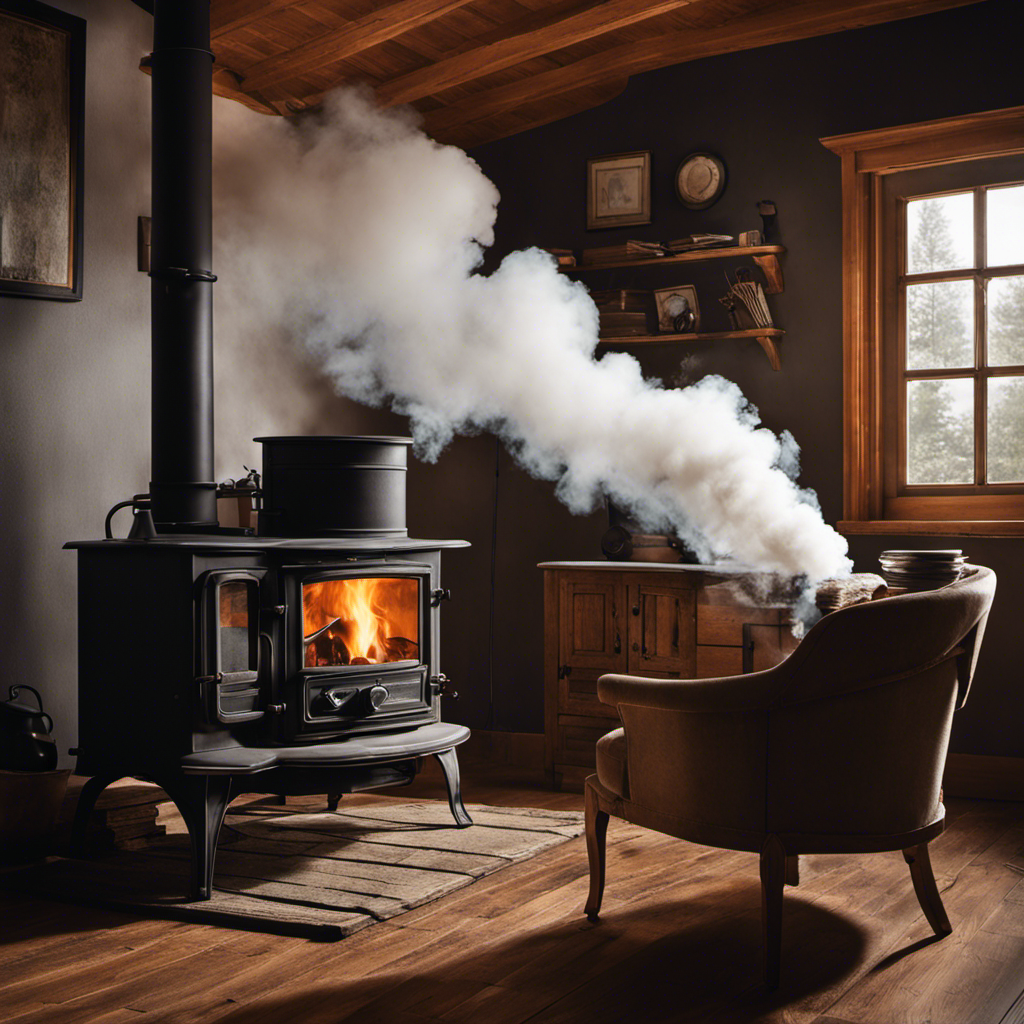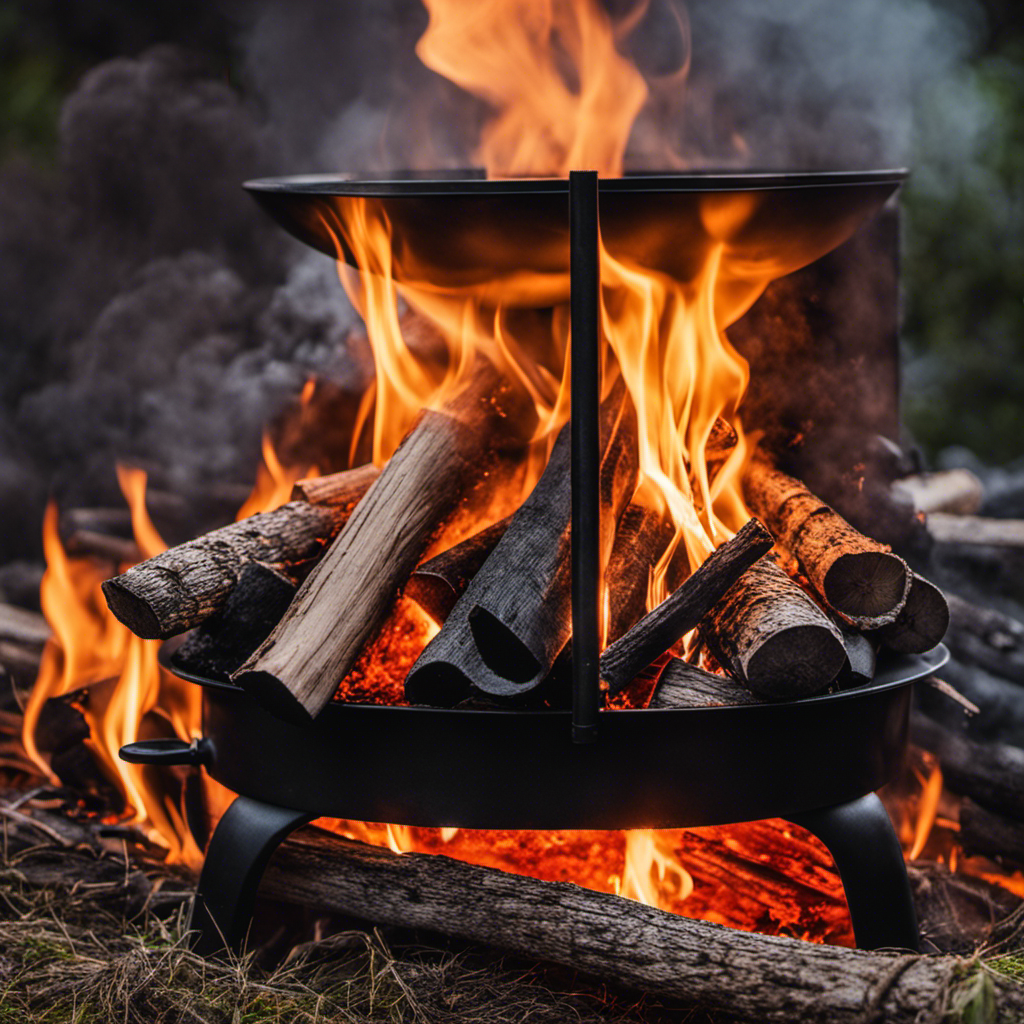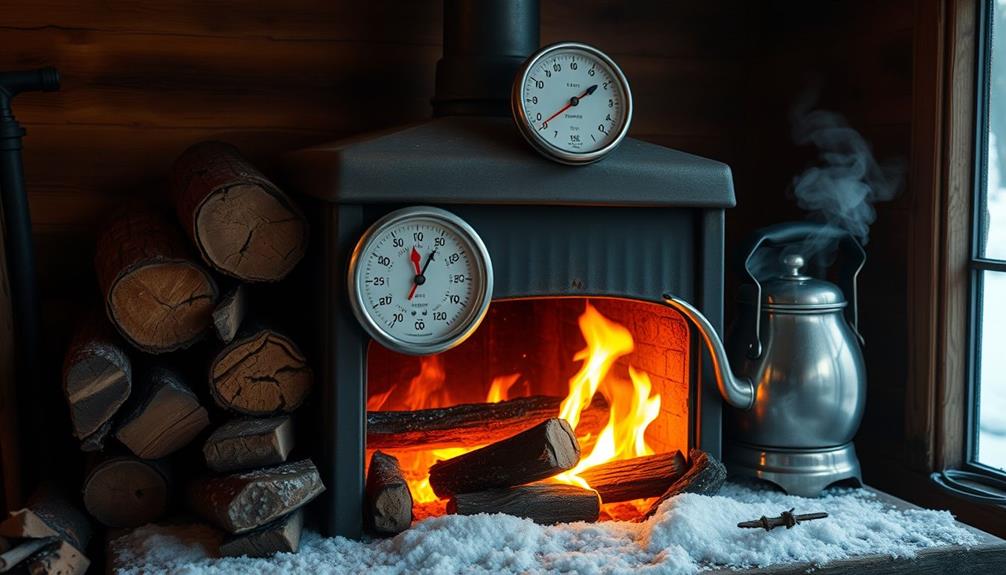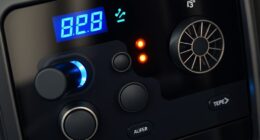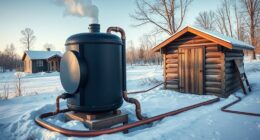I have tried to increase the fire, yet the airflow continues to be blocked. The room is now filled with a frustrating mix of smoke and confusion. I am puzzled as to why my wood stove is not allowing proper ventilation.
This predicament demands answers. Blocked chimney or flue, improper airflow control, insufficient combustion air, inadequate ventilation, incorrect installation or sizing – these culprits lurk in the shadows.
Join me as we delve into the technicalities and unravel the mysteries behind a stubborn wood stove.
Together, we’ll uncover the secrets to a roaring, efficient fire.
Key Takeaways
- Blockage in the chimney or flue can restrict airflow and result in a smoky atmosphere in the home. Cleaning out debris and installing a chimney cap can help prevent future blockages.
- Improper airflow control can be improved by adjusting the damper to regulate the amount of air entering and exiting the stove. Opening the damper allows for increased oxygen supply, while closing it restricts airflow and slows down burning.
- Insufficient combustion air can lead to incomplete combustion and the buildup of creosote. It can also result in dangerous levels of carbon monoxide. Maintaining adequate airflow is essential for proper combustion and enhanced safety.
- Inadequate ventilation can lead to poor indoor air quality, increased carbon monoxide risks, and health implications. Proper ventilation is crucial for maintaining a healthy indoor environment.
Blocked Chimney or Flue
I can’t get any heat from my wood stove because I think there’s a blocked chimney or flue. When the chimney or flue is blocked, it restricts the flow of air and prevents proper ventilation, leading to poor draft and inefficient heating.
There are several signs that indicate a blocked chimney. Firstly, if you notice a strong smell of smoke or a smoky atmosphere in your home, it could mean that the chimney isn’t venting properly. Secondly, if you see soot or creosote buildup on the walls of the chimney, it’s a clear indication of a blockage.
To resolve this issue, there are a few possible solutions. Firstly, you can try using a chimney brush to clean out any debris or buildup. Secondly, hiring a professional chimney sweep can ensure a thorough cleaning and inspection of the chimney. Lastly, installing a chimney cap can prevent debris and animals from entering the chimney and causing blockages in the future.
Improper Airflow Control
The wood stove’s improper airflow control is causing the smoke to fill the room, so I need to adjust the damper to improve ventilation.
Damper adjustment plays a crucial role in ensuring efficient and safe operation of the wood stove. By regulating the amount of air entering and exiting the stove, we can prevent backdrafts and achieve optimal combustion.
Backdraft prevention is essential as it prevents smoke and harmful gases from entering the room, ensuring a healthy indoor environment.
To adjust the damper, I’ll carefully open or close it to control the airflow. Opening the damper allows for increased oxygen supply, promoting better combustion and reducing smoke production. Conversely, closing the damper restricts airflow, resulting in slower burning and reduced heat output.
Insufficient Combustion Air
To improve combustion efficiency, I’ll ensure that the wood stove has sufficient airflow. This is crucial for reducing air quality concerns and minimizing the environmental impact.
Here are four key reasons why adequate airflow is essential:
-
Proper combustion: Sufficient airflow allows for complete combustion of wood, resulting in less smoke and harmful particulate matter emitted into the atmosphere.
-
Increased efficiency: With enough air supply, the wood stove can reach higher temperatures, leading to more effective heat transfer and less wasted energy.
-
Reduced creosote buildup: Insufficient airflow can cause incomplete combustion, resulting in the formation of creosote, a flammable and highly polluting substance that can accumulate in the chimney.
-
Enhanced safety: Insufficient airflow can lead to the accumulation of carbon monoxide, a deadly gas. Sufficient airflow helps prevent dangerous levels of carbon monoxide from building up in the living space.
Inadequate ventilation can have serious consequences. Let’s now discuss the importance of proper ventilation in wood stoves.
Inadequate Ventilation
Insufficient airflow can lead to poor indoor air quality and increased health risks. Inadequate ventilation can have serious consequences, including carbon monoxide risks and various health implications. When there isn’t enough ventilation in a space, pollutants such as carbon monoxide can accumulate, posing a significant threat to human health.
Carbon monoxide is a colorless and odorless gas that can be produced by the incomplete combustion of fossil fuels, such as wood or gas. Breathing in high levels of carbon monoxide can lead to symptoms such as headaches, dizziness, nausea, and even death.
Additionally, inadequate ventilation can contribute to the buildup of other harmful substances, such as volatile organic compounds (VOCs) and mold spores, which can further worsen indoor air quality and increase the risk of respiratory problems and allergic reactions.
Therefore, ensuring proper ventilation is crucial for maintaining a healthy indoor environment.
Incorrect Installation or Sizing
I think the wood stove isn’t drafting properly because of an issue with the installation or sizing. Here are four potential reasons why:
-
Incorrect stove positioning: If the stove isn’t positioned correctly, it can disrupt the airflow and cause drafting issues. It’s crucial to follow the manufacturer’s guidelines for proper positioning.
-
Insufficient insulation: Insulation plays a vital role in maintaining the temperature inside your home. If there’s insufficient insulation around the stove or chimney, it can lead to heat loss and negatively impact the drafting.
-
Improper chimney height: The height of the chimney is critical for creating the necessary draft. If the chimney is too short, it may not generate enough suction to pull the smoke up and out of the stove.
-
Incorrect flue size: The size of the flue should match the stove’s requirements. A flue that’s too small can restrict airflow, while a flue that’s too large can lead to excessive heat loss.
To address these issues, I recommend consulting with a professional to ensure proper installation and sizing to improve the wood stove’s drafting performance.
Frequently Asked Questions
How Often Should I Clean My Wood Stove Chimney or Flue?
I clean my wood stove chimney or flue regularly to ensure proper draft and prevent creosote buildup. The recommended maintenance intervals for chimney cleaning depend on usage, but generally it should be done at least once a year.
What Are Some Signs That Indicate Improper Airflow Control in a Wood Stove?
When troubleshooting a wood stove’s draft, look for signs of poor airflow such as smoke backing up into the room or difficulty starting and maintaining a fire. Adjusting the air control settings may help improve the draft.
Can a Wood Stove Draft Issue Be Caused by a Lack of Combustion Air?
A wood stove draft issue can be caused by a lack of combustion air. Insufficient air supply hinders the burning process, resulting in poor draft. Proper ventilation and ensuring adequate combustion air intake can resolve the problem.
How Can I Improve Ventilation in the Room Where My Wood Stove Is Installed?
Improving insulation and using a fan can help enhance ventilation in the room where my wood stove is installed. By addressing these factors, I can ensure better airflow and a more efficient draft.
What Are Some Common Mistakes Made During Wood Stove Installation or Sizing?
Common wood stove installation errors include improper sizing and inadequate ventilation. These mistakes can lead to poor draft performance. It’s crucial to ensure proper measurements and follow manufacturer guidelines for optimal functioning of the wood stove.
Conclusion
In conclusion, just like a ship needs a clear path through the vast ocean, a wood stove requires a properly functioning chimney or flue to ensure a smooth draft. By addressing any blockages, adjusting airflow controls, ensuring sufficient combustion air, and providing adequate ventilation, you can avoid the frustration of a stubborn wood stove.
Remember, correct installation and sizing are also vital for optimal performance. Keep your wood stove sailing smoothly and enjoy the comforting warmth it brings.

